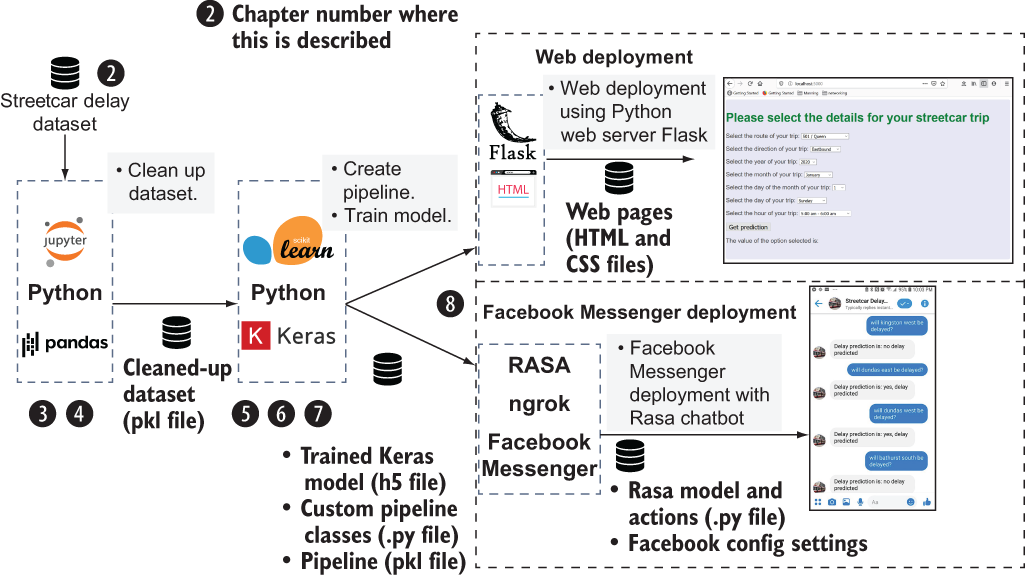chapter nine
This chapter covers
- A review of what we have covered so far in this book
- Additional enhancements you could make to the streetcar delay prediction project
- How you can apply what you have learned to other real-world projects
- Criteria to use to select a deep learning project that uses structured data
- Resources for additional learning
We have almost reached the end of the book. In this chapter, we’ll look back and look forward. First, we’ll review what we have learned in the previous chapters, from cleaning up a real-world dataset to deploying a trained deep learning model. Next, we’ll go over the steps you can take to enhance the streetcar delay prediction project with new data sources. Then we’ll talk about how you can apply what you have learned to other real-world projects, including how to determine whether a given problem involving structured data is a good candidate for a deep learning project. Finally, we’ll review some resources for additional learning about deep learning.
